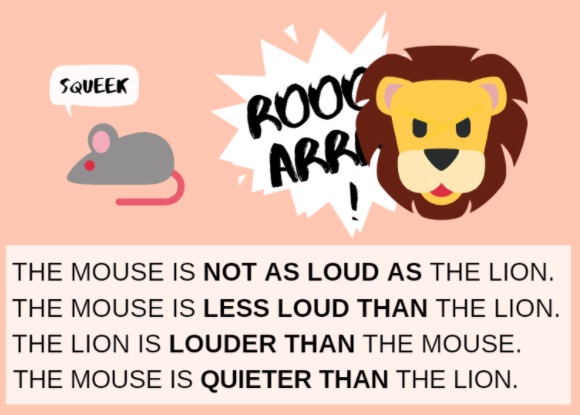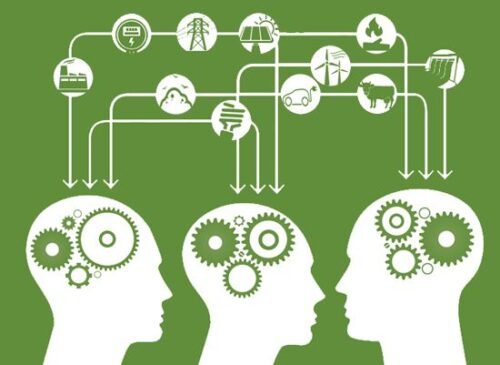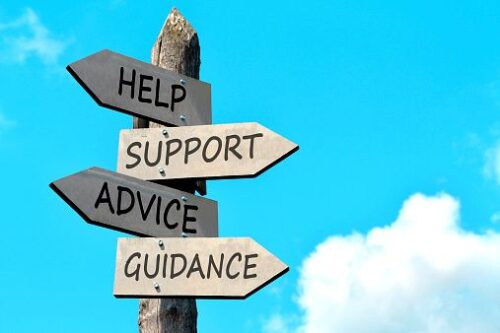We can use adjectives for equal and unequal comparisons in everyday conversations to describe whether people or objects have similar characteristics or not. Equal adjectives are used when two things are equally similar in terms of a characteristic, whereas unequal adjectives are used when the two things are different in regard to a certain aspect.
Use adjectives with “as __ as” to compare equal things
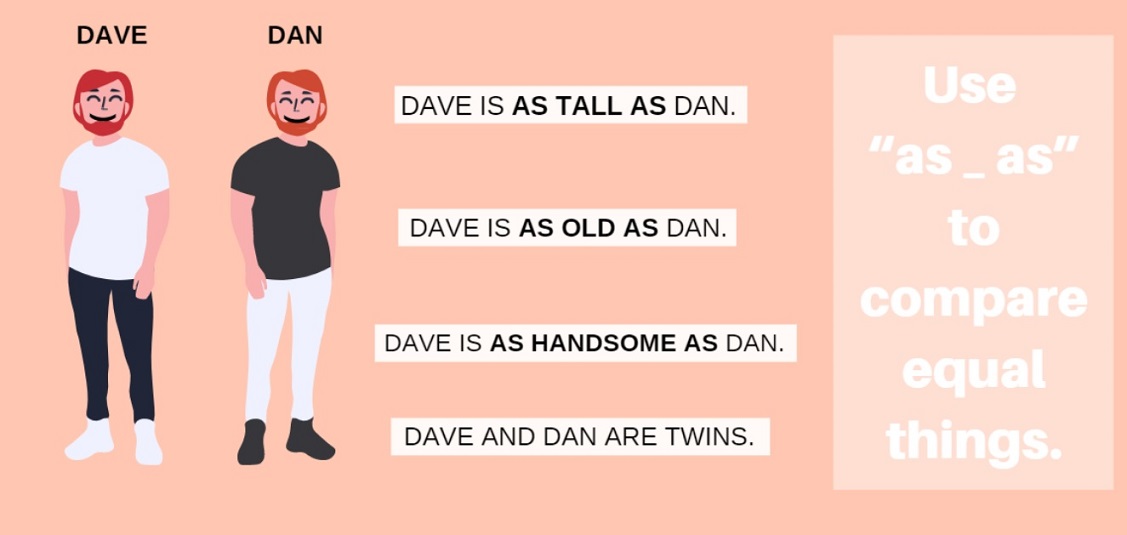
When two things are equal in a certain aspect, we can use the structure “as + [adjective] + as” to show this.
For example:
- Dave is as old as Dan.
- Dave is as tall as Dan.
- Dave is as handsome as Dan. They are twins.
Use “not as / less __ than” to compare unequal things
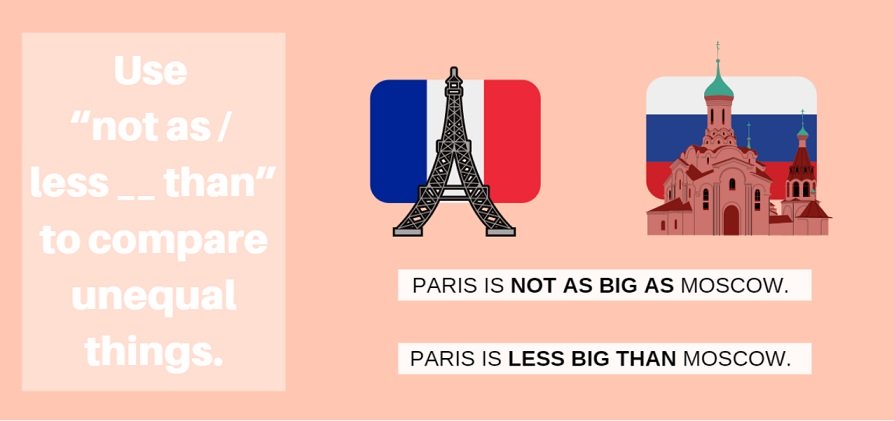
When two things are unequal in some way, we can use the opposite structure “not as + [adjective]” or the quantifier “less + [adjective] + than” to describe this difference.
For example:
- Paris is not as big as Moscow.
- Paris is less big than Moscow.
Do you want to boost your English skills?
Sign up for lessons with a trained native teacher here:
“Not as / Less __ than” can have the same meaning as using comparative adjectives
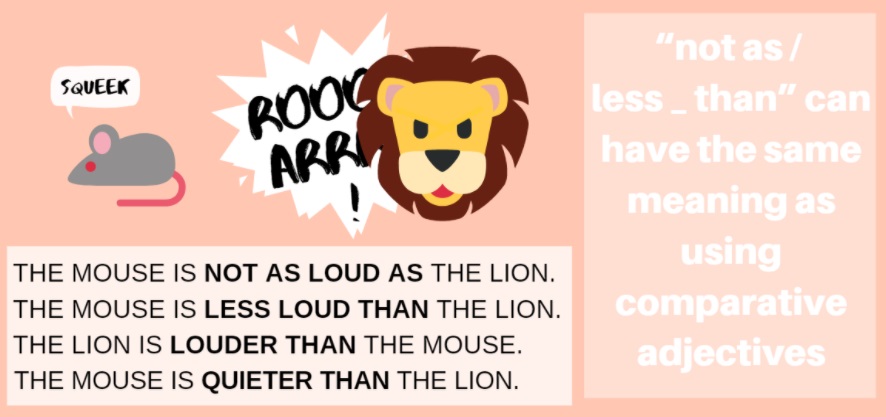
For example:
- The mouse is not as loud as the lion.
- The mouse is less loud than the lion.
- The lion is louder than the mouse.
- The mouse is quieter than the lion.
Summary of adjectives for equal and unequal comparisons
So far we have learned how to use adjectives for equal and unequal comparisons in English. However, when we are comparing things, we can change regular adjectives into comparative adjectives. These structures add “er” to the end of short adjectives or “more” before long adjectives to show the difference between two objects. Read our article on comparatives and superlatives to see how they work in more detail. Using a comparative adjective can mean the same as using some of the structures we’ve seen above, so remember that there are several ways you can make comparisons in English that can express the same meaning.
Try this online exercise to test what you have learned about using adjectives for equal and unequal comparison.

This article was written by Break Into English’s blog contributor Ilaria Marazzina.

